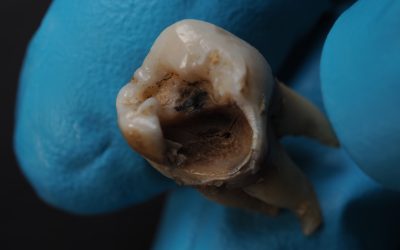Protect your smile by learning the signs and symptoms of gingivitis! Gum disease remains one of the primary concerns for all dentists and patients because of the life-changing symptoms it sometimes produces. To preserve your natural teeth, read about the symptoms, causes, and treatment for gingivitis before contacting a dentist in Toronto.
What Is Gingivitis?
Gingivitis represents one of the most common forms of gum disease. It affects the part of the gums nearest the teeth, known as the gingiva, causing irritation, swelling, and redness. While symptoms remain mild in most cases, lack of proper care can lead to more serious types of gum disease and tooth loss.
Symptoms of Gingivitis
Early detection of gingivitis symptoms can prevent the extraction of one or more permanent teeth. Most patients experience mild symptoms at first, which sometimes allows them to put off seeing their dentist. If you notice any of the following, you should schedule an appointment with The Little Green Building today:
- Swollen gums
- Bad breath
- Dark, discoloured, or red gums
- Bleeding after brushing and flossing
- Tender, receding gums
- Tooth pain
- Sensitivity to hot or cold food and beverages
Causes of Gingivitis
Gingivitis typically occurs due to a combination of different risk factors. While some of the causes remain avoidable, others relate to the ageing process and require the management of a dental professional. Some of the most common causes of gingivitis include:
- Plaque
- Tartar
- Inflammation
- Poor oral hygiene
- Smoking
- Stress
- Nutritional deficits
- Advancing age
- Hormonal changes
- Chronic diseases
- Medications
Certain causes of gingivitis remain outside the patient’s control, like hormonal changes and chronic diseases. However, an experienced dentist can develop a treatment plan that minimizes the effects of ageing, chronic diseases, and medicine that cause or exacerbate gingivitis.
Treatment for Gingivitis
Treatment for gingivitis symptoms involves both professional dental care and at-home procedures.
Professional Treatment
In most cases, a dentist will need to scale a patient’s teeth to remove the plaque and tartar that irritate the gums. More severe cases may call for root planing and antibiotics to fight infection. Scaling entails the use of a curved instrument to scrape off tartar and plaque. Root planing represents a more invasive procedure that requires the dentist to go under the gums and resurface the roots of the teeth.
At-Home Treatment
After receiving professional treatment, patients must maintain a healthy diet and proper oral hygiene at home to prevent the recurrence of gingivitis. The American Dental Association recommends that gingivitis patients adhere to the following instructions:
- Brush teeth and gums for two minutes at least twice a day
- Floss at least once a day
- Rinse with an antiseptic mouthwash
- Check gums regularly for swelling, irritation, and discoloration
- Reduce sugar consumption
Have you found yourself suffering from gingivitis symptoms? Call our friendly receptionist at The Little Green Building by dialing 416-769-8135.





